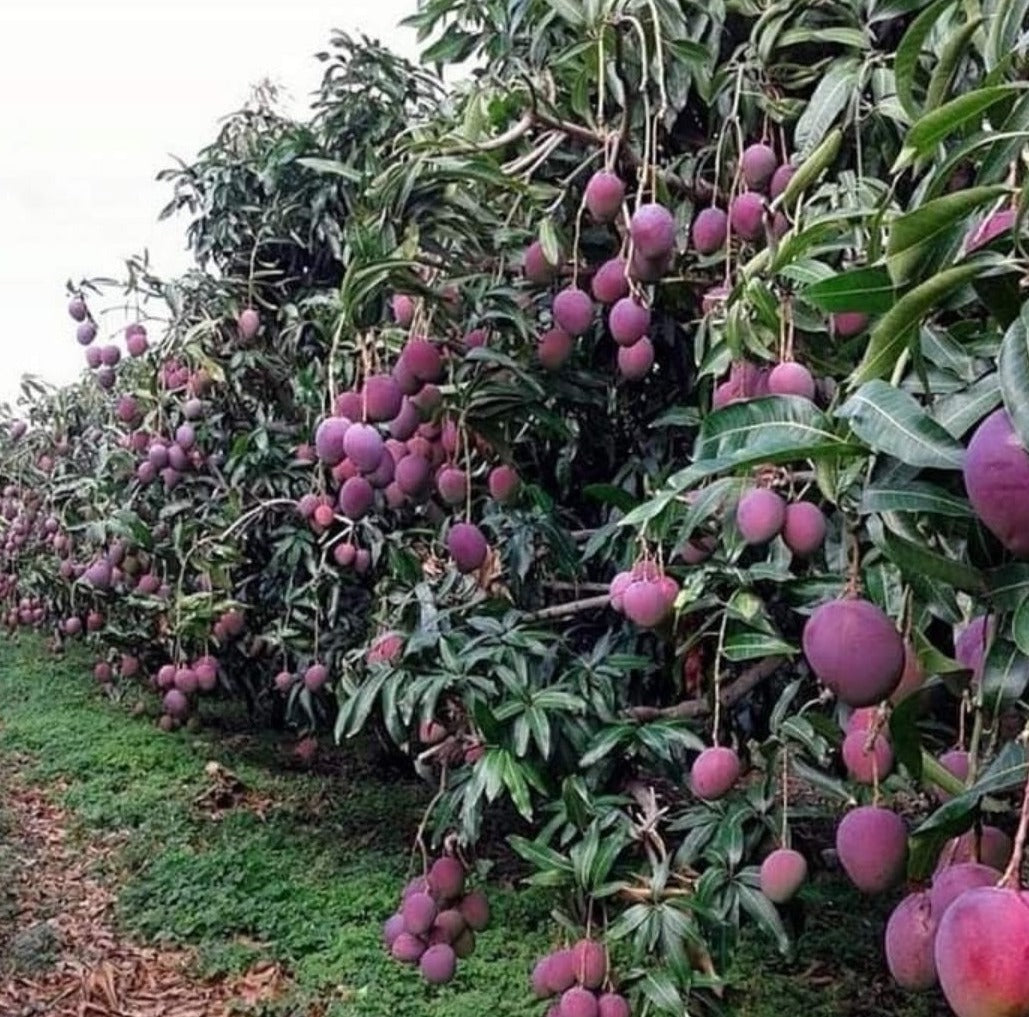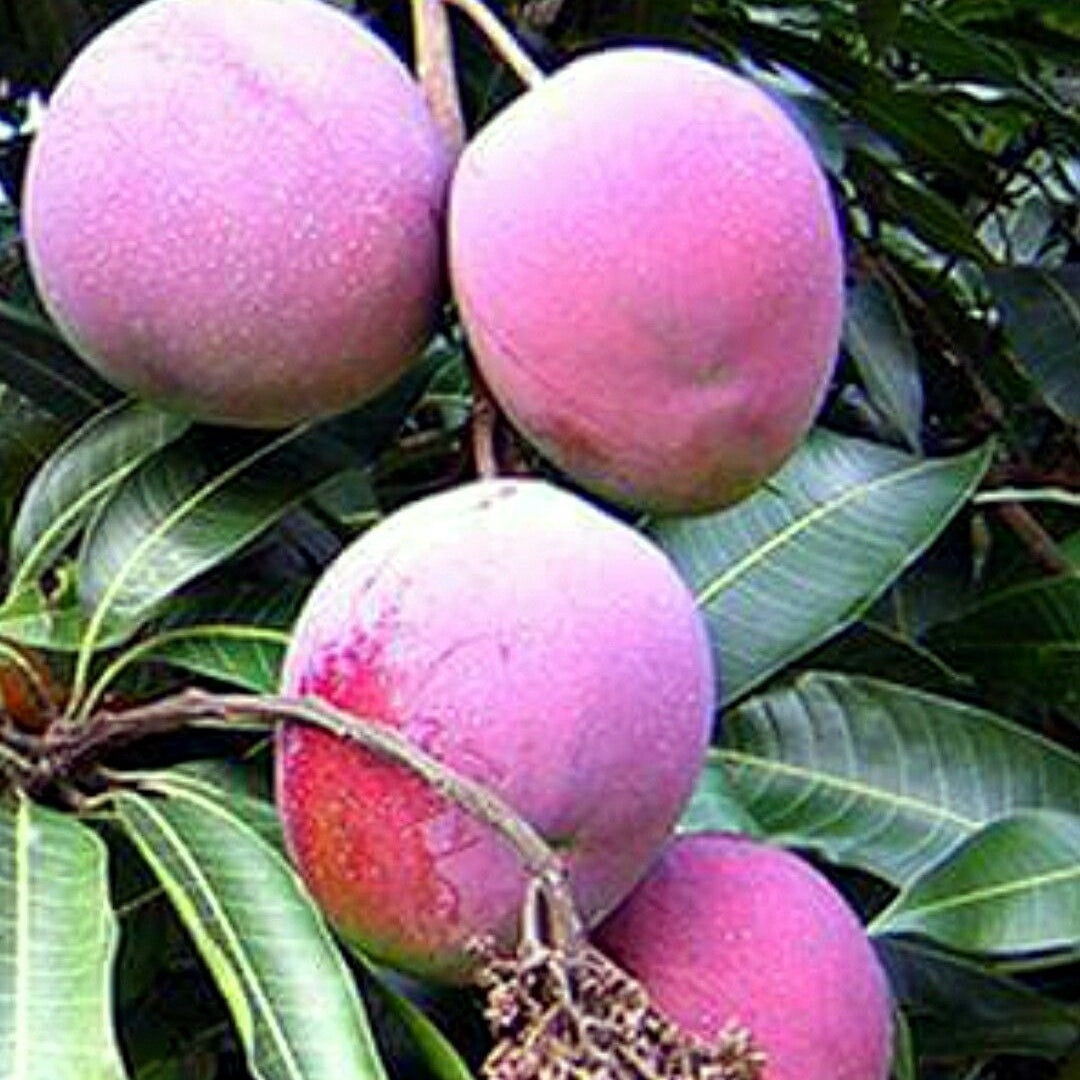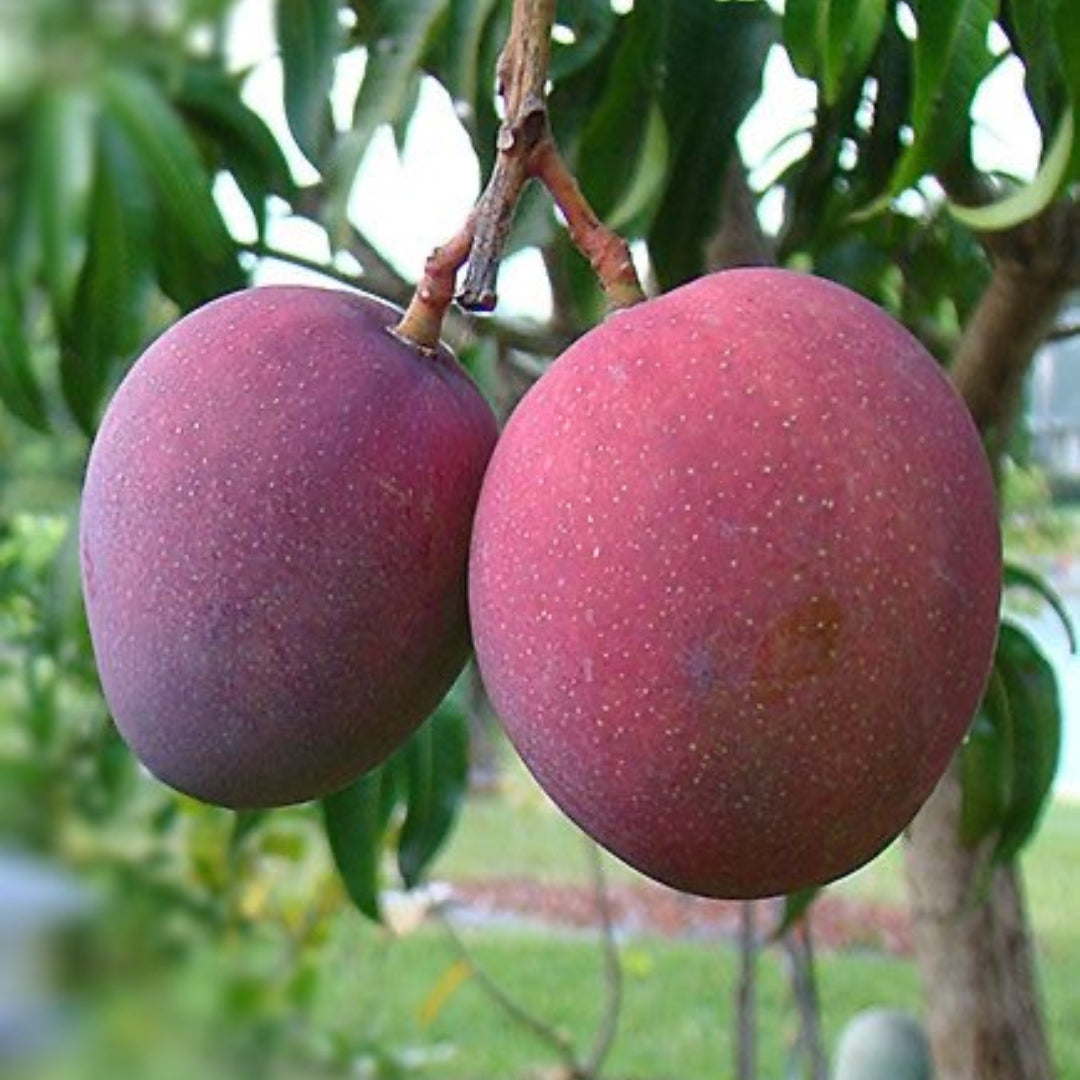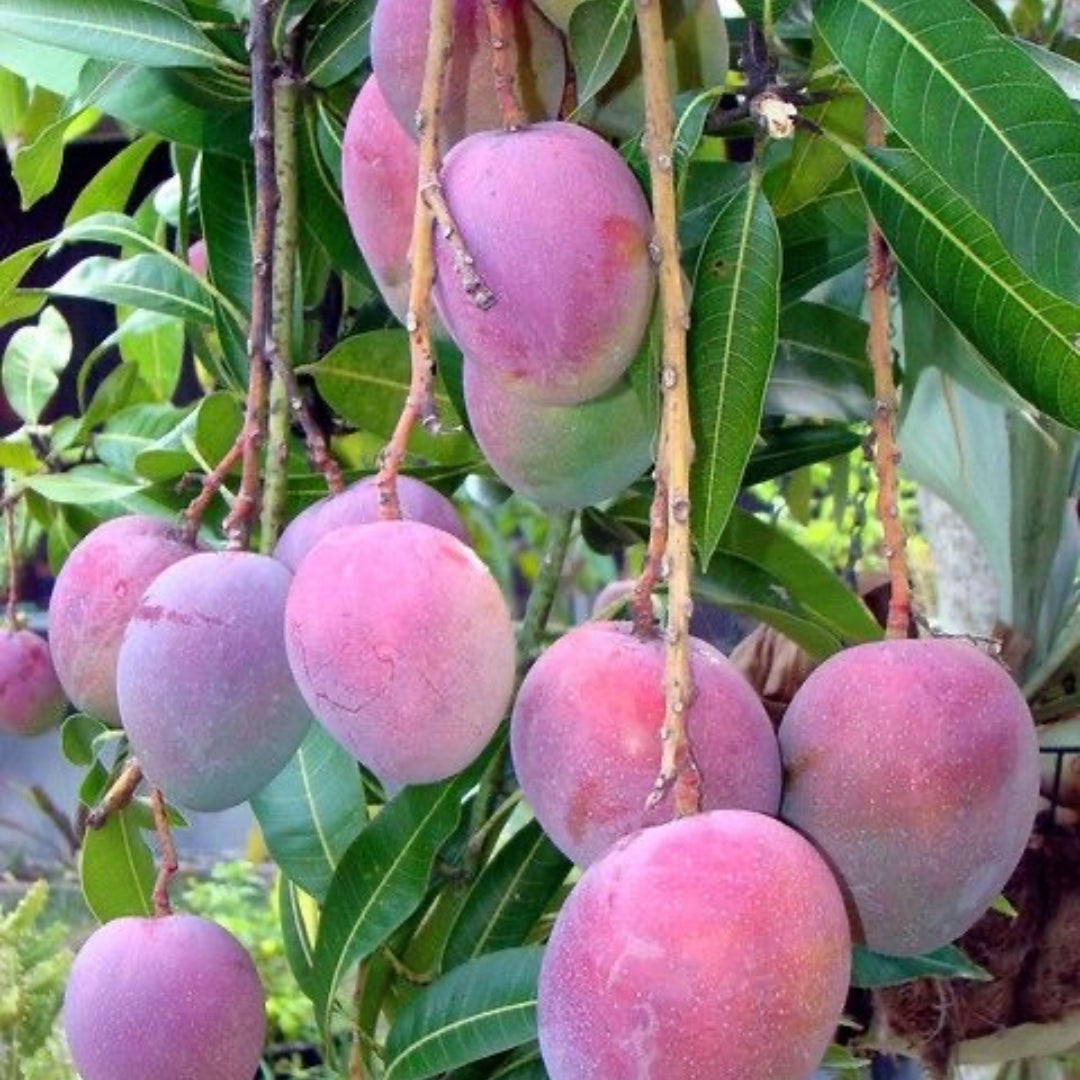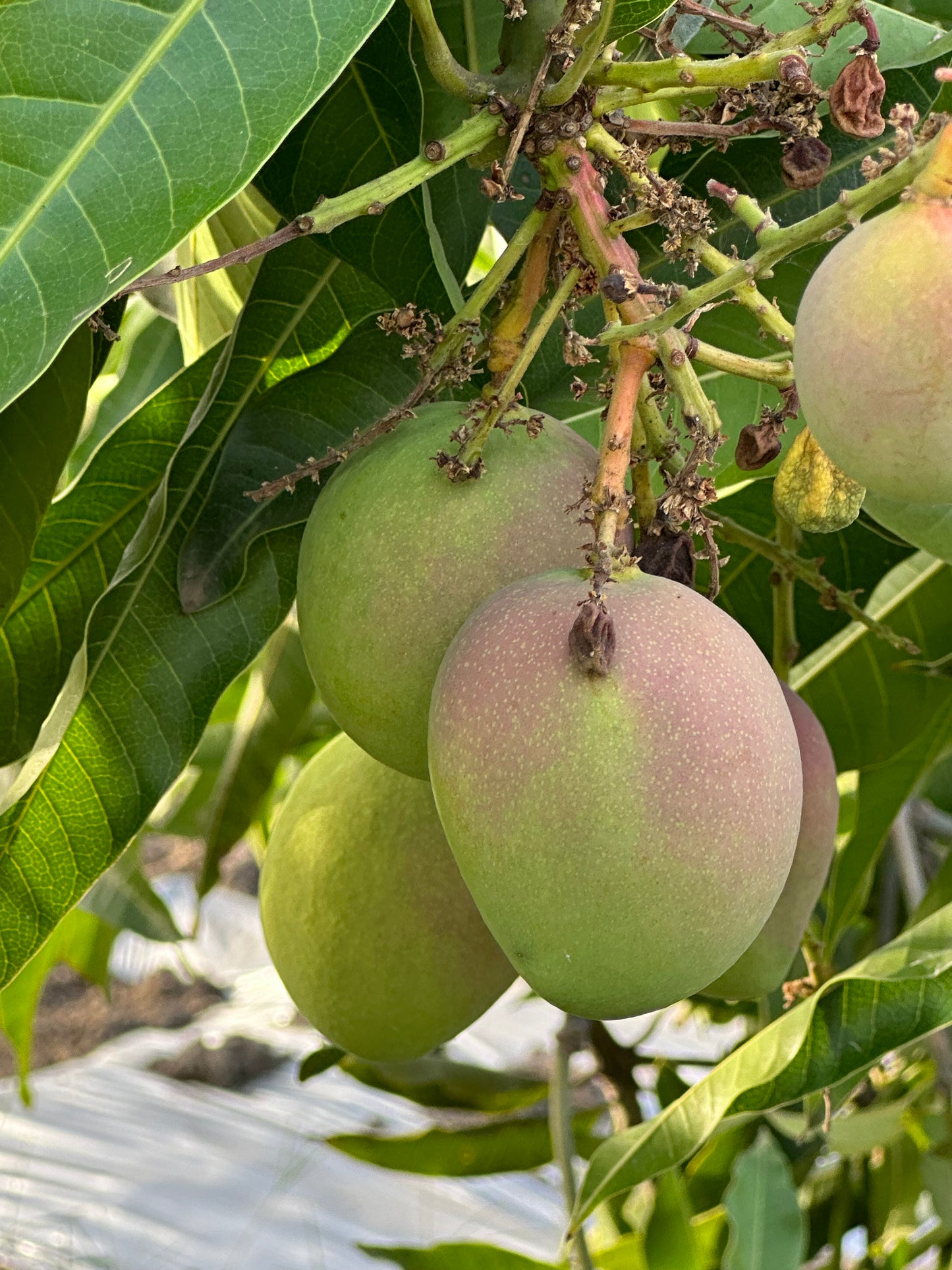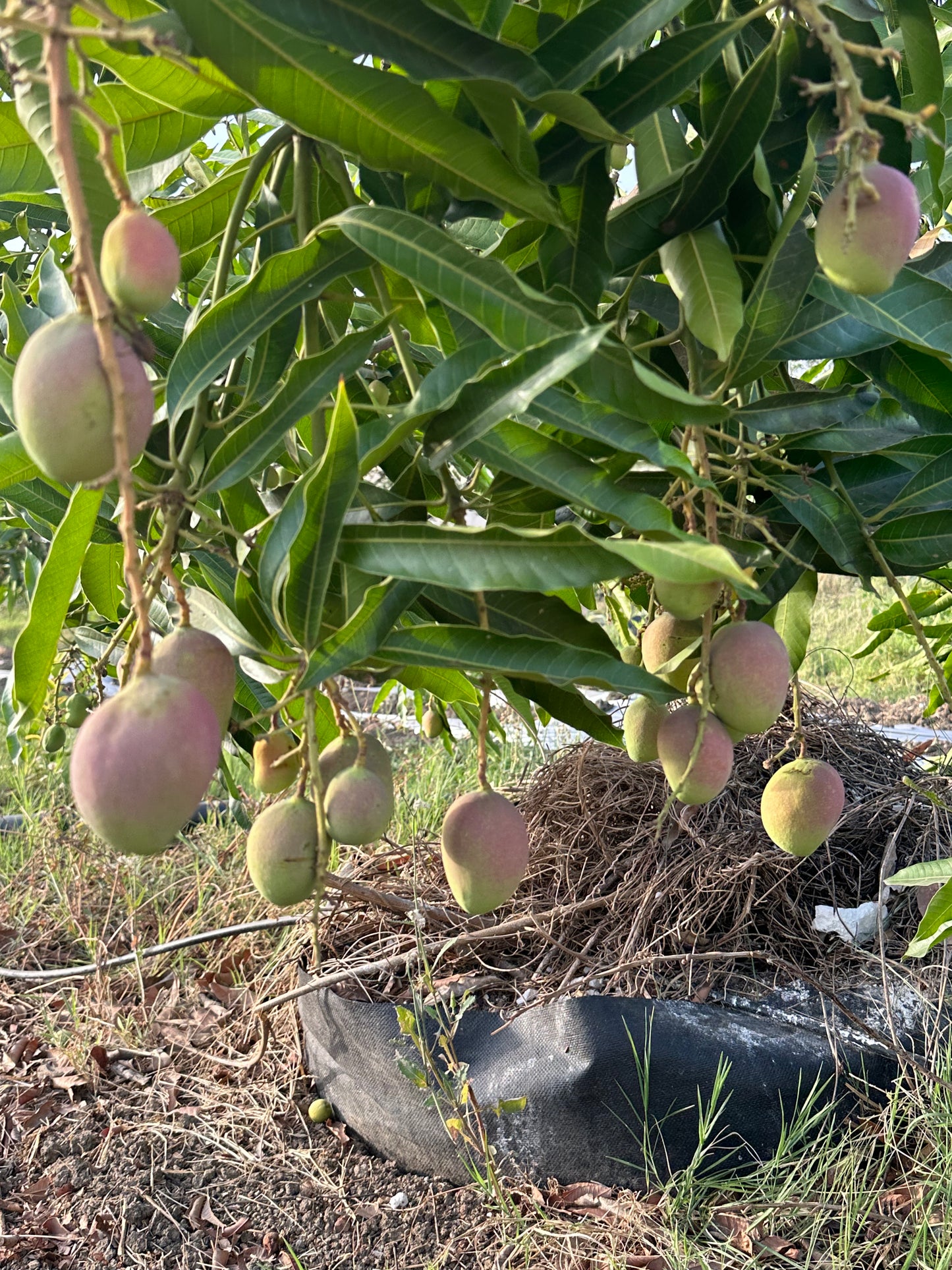My Store
Mango Arunika Grafted Plants"Mangifera indica"
Mango Arunika Grafted Plants"Mangifera indica"
Couldn't load pickup availability
Arunika mango is a delectable mango variety known for its sweet, juicy flesh and excellent flavor. It is a cross between Amrapali and Vanraj mango varieties, resulting in a unique combination of characteristics. The tree produces dwarf and compact canopies, making it suitable for smaller gardens or commercial orchards with limited space. The fruits of Arunika mango are smooth, orange-yellow with a red blush, typically weighing about 190-210 grams each. They have a medium-sized, ovate-oblique shape and a firm texture with scanty fiber. The pulp is orange-yellow, juicy, and has a sweet flavor with a hint of acidity. Arunika mangoes have a high pulp content of about 65% and a TSS (Total Soluble Solids) level of 24.60B, ensuring a delightful eating experience. The hybrid’s attractive fruit color makes it suitable for both domestic and export markets.
About Fruit:
Arunika mangoes are medium-sized fruits with an attractive appearance. They have a smooth, orange-yellow skin with a red blush when ripe. The flesh is juicy, fiberless, and has a rich, sweet flavor with hints of acidity. Arunika mangoes are perfect for fresh consumption, as well as for making juices, smoothies, and desserts.
Versatility:
Arunika mango is versatile and can be used in various culinary applications. Its sweet, aromatic flesh makes it perfect for eating fresh, while its rich flavor enhances the taste of beverages, salads, and desserts. The fiberless texture also makes it suitable for blending into sauces, chutneys, and jams.
Yield Appearance:
Arunika mango trees demonstrate wider adaptability and perform well under various growing conditions, particularly in the northern plains. They are regular bearers, producing a consistent crop of fruits. The average fruit yield of Arunika mango is about 69 kg per plant at 8 years of planting, indicating its high productivity potential. The trees have a compact canopy, making them suitable for both backyard gardens and commercial orchards.
Pollination, Yield, and Harvest:
Arunika mango trees are partially self-pollinating, but cross-pollination with other mango varieties can increase fruit set and yield. Proper care, including regular watering, fertilization, and pest control, can optimize fruit production. The fruits usually ripen from mid to late summer, depending on the growing conditions and climate. Harvesting is done when the fruits develop their characteristic orange-yellow color with a red blush and yield slightly to gentle pressure. The red peel color further enhances the visual appeal of the fruit, making it attractive to consumers.
Share
